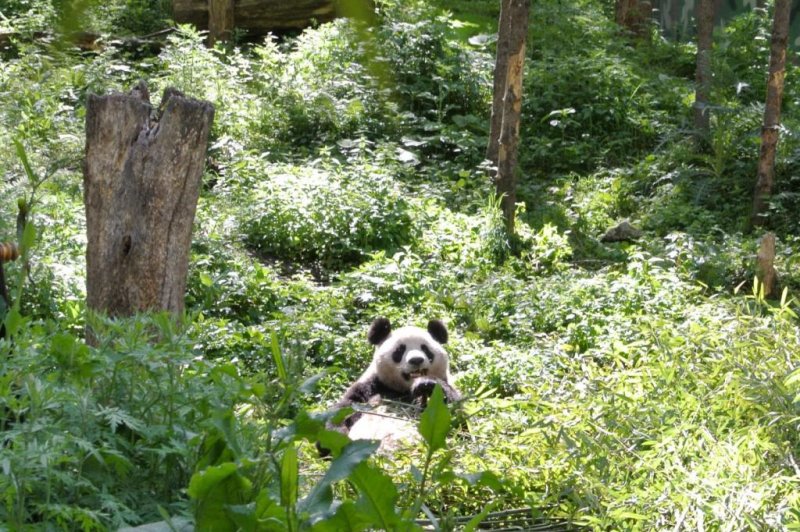A panda munches on bamboo on a forest preserve in China. Photo by Sue Nichols/CSIS/Michigan State
June 26 (UPI) -- Panda conservation benefits a variety of plants and animals, not just pandas, new research proves.
Analysis of habitat restoration projects in China suggest panda conservation efforts offer broad ecological benefits, including boosts in biodiversity. Panda conservation also guards against the negative consequences of global warming.
"Sometimes unintended consequences can be happy ones -- and give us ways to do even better as we work toward sustainability," said Jianguo "Jack" Liu, director of the Center for Systems Integration and Sustainability at Michigan State University, said in a news release. "Pandas are leading us to even greater ways to care for nature and health of humans and the planet."
Due to the panda's slow metabolism and limited diet -- bamboo is lacking in nutritional density -- the species need vast amounts of forest to survive. Most panda conservation efforts in China involve the restoration and protection of forests. Bigger, healthier forests offer benefits to a range of species.
"Reserves are created thinking about the pandas -- but we wanted to see if they provide more benefits than just the pandas," CSIS researcher Andrés Viña said. "A lot of work is focused in regards to the pandas, but we wanted to ask about other animal and plant species. How are these nature reserves doing for biodiversity and for carbon sequestration?"
Satellite data, including remote sensing, suggests forest restoration and the expansion of forest preserve allows for denser canopies and higher rates of CO2 absorption.
But not all forest conservation efforts are equally effective. The new research -- published this week in the journal Ecosphere -- showed conifers planted during some early restoration projects were placed too close together. The especially dense canopy blocked too much sun and prevented the development of sufficient bamboo yields.
In future restoration projects, Viña believes conservationists should plant a great variety of native tree species and leave more space between trees.
"We are seeing efforts that are moving in the right direction and showing positive results for nature and for humans," Viña said. "Now it's time to continue those efforts, and fine tune them to continue to get even more benefits."















